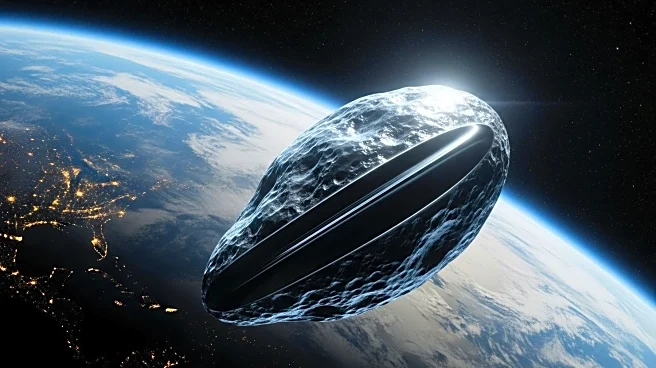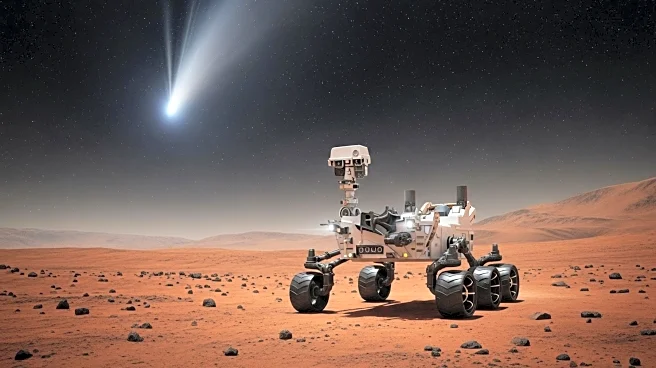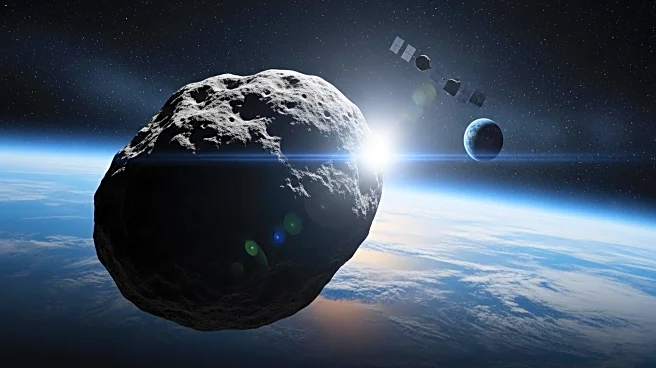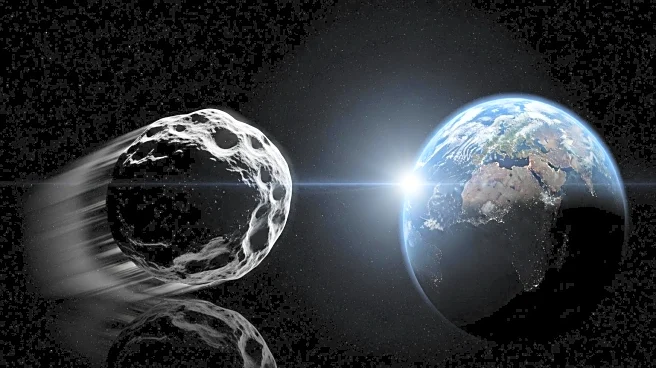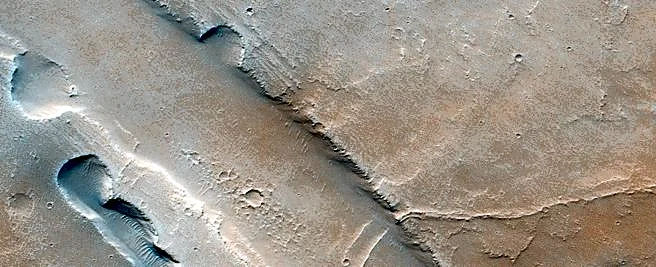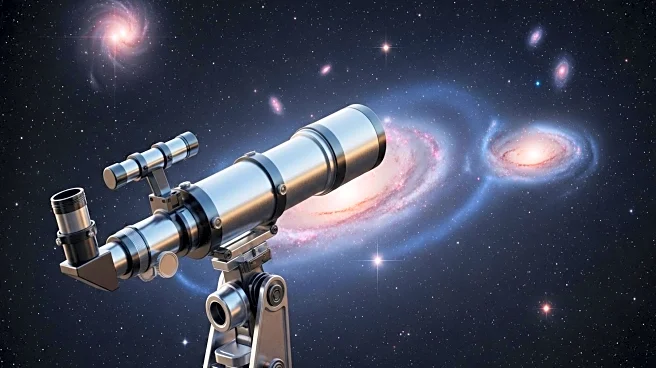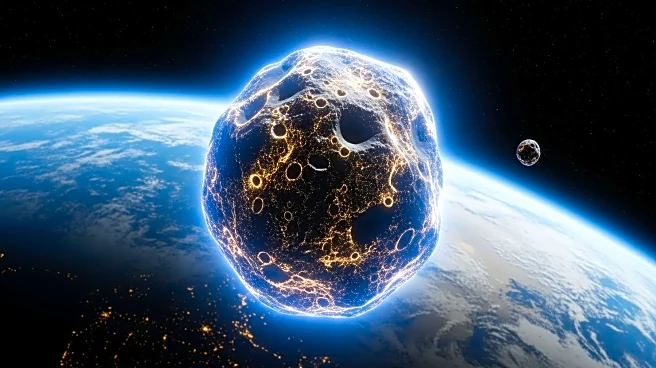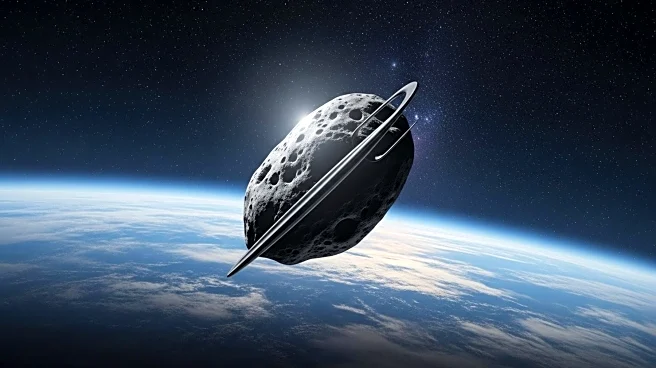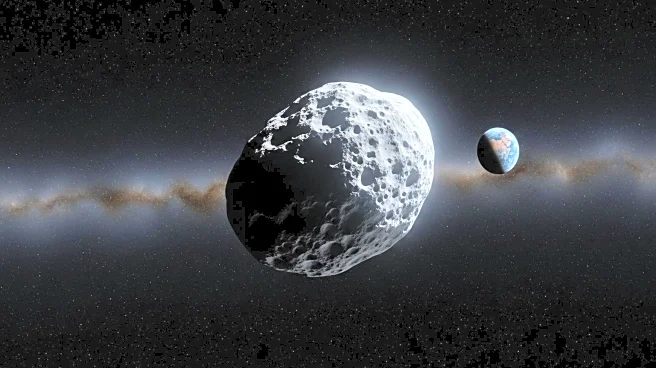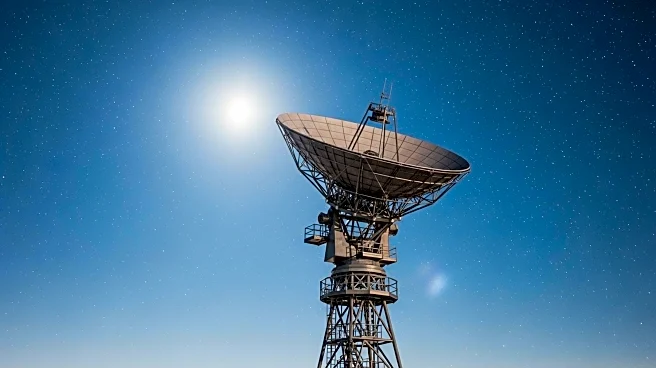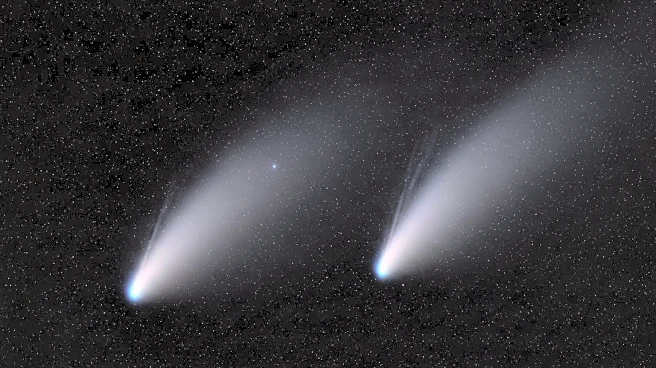What is the story about?
What's Happening?
On October 1, 2025, a small asteroid named 2025 TF passed Earth at a remarkably close distance of 266 miles, approximately the same altitude as the International Space Station. This near-Earth asteroid, measuring between 3 to 6 feet in width, was detected by the Catalina Sky Survey in Arizona shortly after its flyby. The European Space Agency's Planetary Defense Office quickly responded by capturing follow-up observations using a telescope from the Las Cumbres Observatory network in Australia. The asteroid's proximity to Earth underscores the importance of monitoring such celestial objects, as even small asteroids can pose potential threats if their trajectories intersect with Earth's orbit.
Why It's Important?
The flyby of asteroid 2025 TF serves as a critical reminder of the dynamic nature of our solar system and the potential risks posed by near-Earth objects. While smaller asteroids like 2025 TF typically burn up in the atmosphere or scatter harmlessly, larger asteroids could have catastrophic impacts, as evidenced by the asteroid believed to have caused the extinction of the dinosaurs. The event highlights the ongoing efforts of astronomers and space agencies to track and predict the paths of these objects, ensuring that any potential threats are identified and mitigated in advance. This vigilance is crucial for planetary defense strategies aimed at protecting Earth from possible asteroid impacts.
What's Next?
The successful tracking of asteroid 2025 TF by the European Space Agency and other observatories demonstrates the effectiveness of current planetary defense measures. Moving forward, continued advancements in detection technology and international collaboration will be essential in enhancing our ability to monitor and respond to near-Earth objects. Future initiatives may include the development of more sophisticated tracking systems and potential deflection strategies to prevent possible collisions with Earth. As space agencies refine their capabilities, the goal remains to ensure that humanity is prepared for any future asteroid threats.
Beyond the Headlines
The close approach of asteroid 2025 TF also raises broader questions about our preparedness for larger, more dangerous asteroids. It highlights the need for increased investment in space research and technology to improve our understanding of these celestial bodies. Additionally, the event underscores the importance of public awareness and education about the potential risks posed by asteroids, fostering a culture of preparedness and resilience. As we continue to explore and understand our solar system, the lessons learned from events like this will be invaluable in shaping future planetary defense strategies.
AI Generated Content
Do you find this article useful?
